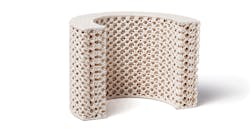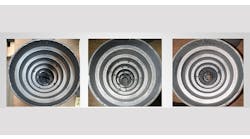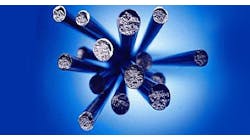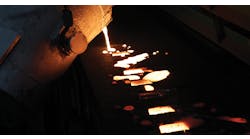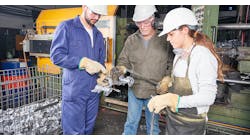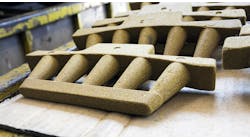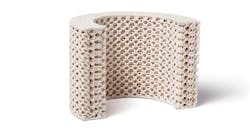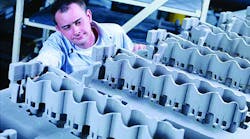Latest from Ask the Expert
Q: Inorganic binder technologies are drawing increasing attention from foundries, and not only in Europe. Does the global roll out of inorganic binder technologies signal the end for conventional shell sand processes?A: This is a provocative question and the answer may vary according to the casting application. Of course, new technologies always threaten the existence of conventional technologies, inasmuch as they add performance value to the respective process itself. In the case of aluminum casting, particularly in high-volume applications such as manufacturing aluminum engine blocks and cylinder heads via permanent mold casting, more and more foundries are converting from organic to inorganic binder systems — and there are several reasons for this trend.
The economic and ecological benefits of ASK Chemicals’ INOTEC™ inorganic binder technology are well known: Odorless core production, no harmful emissions during casting, less maintenance of machinery and tools, and the resulting higher productivity for the casting operation.
There also are technological benefits derived from the faster solidification of the aluminum melt: Reduced die mold temperatures and the consumption of energy from the aluminum melt by water evaporation result in improved mechanic properties of the castings, e.g. reduced dendritic arm spacing.
INOTEC™ is a two-part binder system, including a liquid INOTEC™ binder and a solid inorganic additive, called INOTEC™ Promotor.
Shell sand is a phenolic resin-coated sand with addition rates of 2.5 to 3.5% (based on sand.) In terms of core manufacturing, both binder systems are cured in a hot core box. INOTEC™ requires significantly lower core box temperatures (150-210°C vs. 250°C for shell sand), but this also implies the need for hot-air purging, which is missing in the shell sand process. Strength values (both hot and cold) for INOTEC™-bonded cores are high enough for automatized handling. Care should be taken in regard to brittleness, which typically will be higher than is found shell sand cores.
Additionally, inorganic-bonded cores by nature have a high affinity to water. Thus, substantial technical adjustments (storage facilities with proper storing conditions to avoid exposure to high humidity) and continuous product development to improve humidity resistance are countermeasures.
A major disadvantage of shell sand cores are volatile emissions during core manufacturing, as well as odor and smoke formation in the casting production process as a result of the thermal decomposition of the phenolic resin. As a consequence, condensate or tar build-up reduces die mold service life, and imply continuous maintenance operations. Additionally, measures like ventilation and air treatment systems become mandatory. Higher risks for gas inclusions and casting defects are possible, as shown by the difference in gas formation potential. The amount of condensate for INOTEC™ is related only to the amount of released water that contributes to the binding properties of the silicate gel structure during core manufacturing, storage, and utilization.
Dimensional casting accuracy resulting from improved thermal stability is comparable for both binder systems. The INOTEC™ tooling kit approach even allows customized adjustments to cores’ thermal strain and core geometry. Core collapse or shakeout processes for inorganic-bonded cores require mechanic impact via hammering and vibrating systems. Continuous product development and process discipline enable reliable core collapse properties, even of complex cores on serial production scale procedures.
In comparison to shell sand cores, the INOTEC™ technology shows equal or even superior process properties during core manufacturing and aluminum casting production, if technical measures, process knowledge, and process discipline are established.
Join the Conversation. Email Your Questions for ASK Chemicals
Share your insights, opinions, and elaborate on the questions and the experts' answer(s). You must be logged in to the website in order to post your comments.
